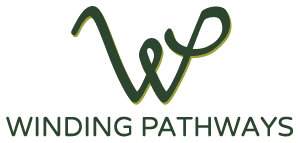by Winding Pathways | Apr 16, 2020 | (Sub)Urban Homesteading, Garden/Yard, Nature, Pests
Lyme Disease is something you just don’t want. Rich has had it twice. It was no fun, and he was lucky. Nearly as soon as symptoms appeared, he visited our family physician. She prescribed a powerful antibiotic that worked wonders and left him with no lingering problems. Unfortunately, many Lyme Disease victims suffer pain and fatigue for years. It’s serious.
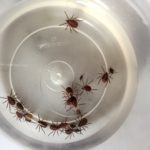
Collection of ticks
Lyme is often transmitted to a human from a bite by a tiny tick that picked up the disease bacteria from an infected white-footed mouse. It once was thought that deer were the primary carrier but mostly they are host to a tiny larval tick that infects a mouse that allows another tick to infect a person.
In theory, eliminating white-footed mice from a yard and home will greatly reduce the odds of transmission of this disease to people. Killing all of them isn’t feasible but reducing their numbers is.
About White-Footed and Deer Mice
White Footed and Deer Mice are amazingly common across much of North America. They’re the cute, native mouse, not to be confused with the common house mouse that originated in the Old World.
White Footeds naturally live in dry temperate forests with brush. That perfectly describes suburban landscaping. It’s likely that five to 20 white-footed mice live in close proximity to most suburban families. They’re nocturnal and rarely seen.
Here are some characteristics:
- They’re hoarders. Find a cache of corn, dog food, or acorns in a shoe or empty can and you’ve found a white-footed mouse cache.
- They reproduce like crazy. A 44-day old female can become pregnant and bear a litter after 22 to 28 days. Babies become independent in three weeks and soon begin having their own babies. Mom often has two to four litters a year.
- They don’t live long. A year-old mouse is elderly.
- Foxes, weasels, hawks, owls, coyotes, and many other predators love dining on mice.
- White Footed mice enjoy coming into homes, where they often find food and enjoy a furnace’s warmth. They can bring with them disease-bearing ticks.
Prudent homeowners carefully manage ticks, in part by reducing white-footed mice numbers. The fewer mice that live near people the lower the odds a person will contract Lyme Disease. So, managing mice and ticks makes for a healthier home and yard. Here are a few tips:
To reduce mouse populations and entry to homes:
- Welcome mouse predators. Karla Bloem, Executive Director of the International Owl Center says, “Two actions people can take to encourage owls are to protect large dead trees that aren’t a threat to people of buildings should they fall. Owls love them. Also, building and erecting an owl house can welcome owls to live near a home and catch and eat mice.” Barred owl nest box plans, and plans for many other birdhouses, can be found at www.nestwatch.org.
- Plug up holes that allow mice to enter a home and replace worn or broken weatherstripping. This is an important fall maintenance that also keeps cold drafts outside and reduces heating bills.
- Avoid feeding mice. They love dining on dog or cat food left in a dish overnight or birdseed left under a feeder. Only feed pets and wild birds what they can eat in a short time. Then, pick up and clean the pet bowl.
- Use snap traps to kill mice in the house. Avoid poison. A poisoned mouse can stagger outside to be caught and eaten by an owl, which can sicken or die from the poison.
A Few More Ways to Reduce Lyme Disease
In addition to reducing mouse numbers and applying a vaccine to keep survivors free of Lyme Disease bacteria here are a few other ways a person can do to reduce odds of infection:
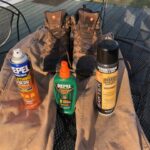
Pants, boots, gaiters and insect repellents help protect from ticks.
Use Permethrin: When applied to clothing, not skin, this chemical repels and kills ticks. Rich purchased several sets of clothing from the Insect Shield Company that are impregnated with permethrin. Supposedly the tick-killing effectiveness lasts for 70 washings. The chemical is also available in spray cans to apply to any clothing.
Do Tick Checks: After being outside, strip down and check the body over for ticks. Then take a hot sudsy shower. Ticks usually crawl around on a person for several hours before biting. A tick merely walking on the skin can’t infect a person.

Opossums groom themselves carefully.
Thank and welcome opossums: New research indicates that opossums are tick vacuum cleaners. Ticks climb on them, but these primitive mammals groom often and eat the ticks they remove from their fur and skin. If you have a possum living in the yard be happy.
An Emerging Tool in the Battle Against Lyme Disease
A new product is being developed and tested by a major research company. It is an oral nontoxic vaccine placed in small baits. When strategically positioned around a yard, mice not yet infected with Lyme bacteria eat it and become resistant to the bacteria. Mice uninfected by Lyme can’t spread the disease to a person. If all goes well this product will be on the market by 2021 and may be a major help in reducing human cases of Lyme Disease.
Lyme Disease is an awful condition. Taking precautions to reduce the odds of being infected makes sense.
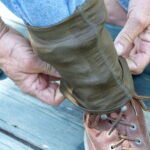
gaiters with tick guard help repel ticks.
by Winding Pathways | Mar 26, 2020 | (Sub)Urban Homesteading, Birds, Nature
*Note: Our assessment of WindowAlert is based on our experiences both from purchasing the company’s product and a complimentary set of decals to try.
Last fall as Rich was walking along the outside of the Cedar Rapids Public Library and found a tiny dead warbler on the sidewalk beneath a large window. Fall warblers are tough to identify but it was a blackpoll. Why did the bird hit the window?
This amazing bird has an enormous migration from the far north of the continent to the south each fall, with a reverse trip in the spring. The bird Rich found probably was only halfway through its autumnal journey. Its death was sad and probably could have been prevented.
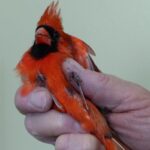
Cardinal
Occasionally we have a bird crash against our windows at Winding Pathways, and a male cardinal persists in cracking his head against a window at our church in Cedar Rapids.
Bird numbers are declining at an alarming rate for many reasons. Certainly, habitat loss and climate change are taking a toll. Feral cats and windows also kill millions of birds every year. Some of that loss can be prevented.
Why Birds Are Killed by Windows?
According to Spencer Schock at WindowAlert, birds are impacted by windows for two reasons. First, all year, but especially during migration, birds simply don’t see the glass and assume they can fly right through it. That’s what happened to the warbler. Second, it’s springtime rivalry. The cardinal banging on the church window sees his reflection, assumes it is a rival and tries to chase it off or intimidate it. This behavior is common, especially among cardinals, and usually happens from late winter into early spring. It’s rarely fatal to the bird but can annoy humans inside the building.
How to Reduce Bird Strikes on Windows.
The simple solution for both types of bird strikes is to do something so the animal recognizes it is glass. Here are some ways to reduce window strikes:
- Close Drapes. But then people can’t see out and sunshine can’t enter.
- Put something over the exterior window that looks to birds like a barrier or physically keeps them away. Draping the mesh netlike material made to protect cherry trees from birds trying to steal fruit works. The downside is that sometimes birds get tangled in it.
- Put decals on the windows to help birds identify a glass barrier. We like the many designs sold by WindowAlert. They’re easy to apply, attractive, inexpensive and work well.
- Eliminate reflection to keep cardinals and other territorial birds from attacking their own image. WindowAlert has a material called Stop Bird Attack. It comes in a spray can that’s sprayed on the outside of the window. The material looks like white flocking put on Christmas trees to imitate snow. It eliminates reflection and can be easily cleaned off the window after the mating season.
-
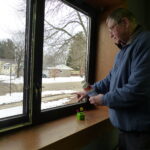
-
Check the windows first.
-
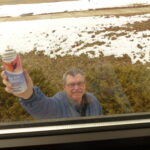
-
Ready to spray
-
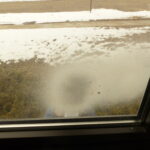
-
The spray makes the window opaque.
-

-
The BirdStop spray resembles Christmas tree flocking.
What to Do When a Bird is Found under a Window
A few times we’ve been sitting in our home and hear a bang as a bird strikes a window. We sadly find the poor animal lying still under the window. There are two likely outcomes.
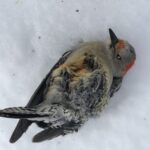
This bird broke its neck hitting a window.
The bird is either dead or dying and there’s nothing we can do to alter that unhappy outcome. e bury the poor creature and add more visibility items to the window.
The bird has been stunned and will soon recover and fly away. Often a bird will recover, but while it is stunned it’s vulnerable to cats and other predators. Spencer advises gently putting the bird in a closed cardboard box or large paper bag. As soon as it has recovered, release it outdoors.
Probably the best thing a homeowner can do to help songbirds is to plant a diversity of native grasses, flowers, shrubs, and trees to create habitat. The next best action is to keep cats indoors and reduce the odds of collisions with glass using the methods described above.
by Winding Pathways | Mar 19, 2020 | (Sub)Urban Homesteading, Garden/Yard, Nature
Stuck at home? A tiny microbe is sure changing the lives of people worldwide. Unexpectedly, meetings and schools have closed and transportation is disrupted as uncertainty runs rampant. With every challenge comes an opportunity. We’re sticking close to home at Winding Pathways but are using more time around the house to do fun things and accomplish projects ignored during normally busy lives.
In the midst of uncertainty, it’s easy to be overwhelmed by events and suffer from lethargy and fatigue. That comes with the turf. So, being physically and intellectually active helps ward off melancholy.
With millions of kids now home with parents and other workers and retired folks staying closer to home and in apartments, here are a few productive activities we suggest. Anyone anywhere can engage in at least some of these activities. And, Winding Pathways invites you to create your own generative ideas to boost your immune system and help us all through this challenging time.
Attune to and with nature.
- Research affirms that contact with nature is calming and healing. Shinrin yoku also known as “forest bathing” is a way to connect with calming elements in nature. This concept extends far beyond the literal interpretation of a forest. Any natural area of any size can provide healing benefits. John Muir wrote it well:
“Climb the mountains and get their good tidings. Nature’s peace will flow into you as sunshine flows into trees. The winds will blow their own freshness into you, and the storms their energy, while cares will drop away from you like the leaves of Autumn.”
By connecting with nature wherever we are, we can learn and have a good time, too.
-

A water source helps attract birds.
Birding: Even in the biggest cities birds abound. Sparrows and pigeons are fascinating. Look closely at a group of birds hanging around the balcony or out the back door and soon you will note individual differences. Size. Shape. Behaviors. One sparrow, for example, may have an unusually colored feather while another has a twisted beak. Once you can identify individual birds, it’s possible to conduct simple research. Do the birds seem to hang out with their friends?
If odd feathered sparrow #1 seems to like being with crooked beak sparrow #2 maybe they are friends……or perhaps mates. How many different species of birds come to the Balcony or yard? You might be surprised. Look up. Spring is migration season and millions of big birds are heading north. Often their route takes them even over big cities. They often fly high so look with “soft eyes” for undulating strings of birds aloft.
Experiment. Put a birdseed mix in a feeder or even on a backyard table or the ground. What seeds do birds prefer?
- When the virus appeared, plants remained in winter mode across much of the country, but spring is fast approaching in the northern hemisphere. Now is a great time to keep a journal, or a simple list of the order in which buds swell and leaves emerge.
Gardening
-

Work the garden to connect with the earth.
Gardening is a great remedy for stress, and it can yield a surprising amount of food, even in a tiny space. One of the best vegetables for kids to plant is the humble radish. These cold, hardy, spicy roots can be planted very early in the spring and often harvest comes in just a few weeks. Lettuce, chard, spinach, and other greens also can be planted early, but beans, tomatoes, corn, okra, squash, and many other veggies need to wait until winter’s frost is just a memory.
Take a walk
- Nature is pretty safe from Coronavirus. It doesn’t lurk in the woods. Poke around the yard. And, a ramble in a nearby park, woods, or along a trail is a stellar way to spend a few hours.
- Another option is to find a labyrinth outside to walk. The World Labyrinth Locator lists labyrinths across the world. A labyrinth is different from a maze. Labyrinths are designed to help people center, release what is on their mind or in their heart, receive inspiration, and reunite with their community in a positive way.
Connect Virtually
- Isolation isn’t fun. Call friends. A phone call is a great way to cheer a friend. And, check in with neighbors you rarely see. Think of ways to direct the conversation to the positive. Live the positive through regular practice. What does this do? Read below.
Practice Mindfulness
-
- Mindfulness is the ability to be present and aware of our thoughts with curiosity and kindness. Jon Kabat-Zinn provides excellent guidance on this. We practice this with adult students at Kirkwood Community College. To a person, they find benefit in reducing blood pressure, anxiety and heart rate, while their sense of calm increases.
- Another form is HeartMath which helps people focus first on breathing, then on creating a peaceful place in their mind that they feel in their heart and can return to anytime when under stress.
- Reduce time on social media and listening to reports on radio or television. Keep abreast as needed and avoid perseverating on the negative.
- Think and behave positively. Norman Vincent Pearle was a master at helping us shift into the positive.
- Laugh! Laughter releases positive hormones and neurotransmitters. An easy way to remember this is to give yourself a good DOSE of levity and positivity. Dopamine, Oxytocin, Serotonin, and Endorphins. These counteract the stress hormones. How can we do this? Read jokes, watch funny films or old TV shows that make you laugh.
-
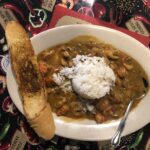
Healthy foods are important in this time of stress.
Eat Healthily. When we are under stress, we tend to eat more and the wrong foods. So, mind what you eat, drink water, and try some of these activities above and add your own.
-
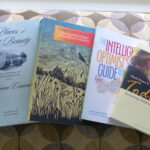
Reading positive literature will help us.
Read Entertaining Materials. From Comic books to graphic novels to non-fiction, engage your brain, learn and go lightly through this time. Share an engaging article, book, poem or song with someone. Recently The Gazette featured a woman, Mary Fannie Woodruff, from Virginia who continues to bake pies at 103 years old! How cool is that? The article was a great read we shared with family in Virginia.
We have many ways that we can all move through this uncertain time and help each other out on this winding path of life.
by Winding Pathways | Feb 20, 2020 | (Sub)Urban Homesteading, Garden/Yard, Garden/Yard, Labyrinths, Nature
When we moved into our home ten years ago, we ended up with more than a house. The former owner had regularly mowed most of our two acres. Within the next two years, we shrank the lawn by about half. A steep former lawn north of the house is now prairie and a fairly level quarter acre between our house and the road is Marion’s labyrinth that she created within a prairie we planted.
Today, most people call flower-studded prairies “pollinator patches” and interest is strong in transforming lawns into them. Here are just a few of the good reasons:
Why Plant Pollinator Patches?
- Color: Lawns are a monoculture of green. Pollinator patches feature three seasons worth of changing vibrant color as many species of wildflowers come into and go out of bloom. They are beautiful.
- Water: Closely mowed lawns don’t absorb rain well. Much of a storm’s water runs off, worsening flooding. In contrast, deep-rooted prairies channel most of a storm’s water into the soil, where it eventually recharges the water table and doesn’t worsen downstream flooding.
- Labor: We don’t enjoy endless hours walking behind a lawnmower. We will mow our newly planted prairie two or three times this summer and in the following years, we won’t mow it at all. The lawn takes about a dozen mows a year. So, we’re saving time and mower gas that costs money and creates carbon dioxide.
- Wildlife: We love watching our wren pairs forage for insects in our pollinator patches. By expanding our prairie we’ll welcome even more beautiful and interesting beneficial wild animals to our yard.
Partnerships Work!
Our new prairie will be close to busy 30th St. Drive, so motorists cruising by will see the land transform. We’re partnering the project with the Monarch Research Project, Linn County Roadsides, Sustainable Landscape Solutions, and Pheasants Forever.
Many people want to create pollinator patches in their yards but don’t know how to do this. We will be blogging through the process to help folks know how this is done. Stay tuned and keep visiting www.windingpathways.com to learn how.
-

-
The heavy, up-slope clay soil will absorb water more efficiently and reduce runoff.
-

-
The crew from Sustainable Landscape Solutions determine soil type
-
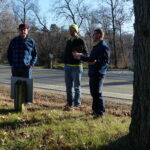
-
Winding Pathways, Linn County roadsides, Pheasants Forever, the Monarch Research Project and Pheasant Forever make a strong partnersjhip demonstrating how to improve the quality of the land.
-

-
This year snow covers the lawn.
by Winding Pathways | Feb 13, 2020 | Birds, Mammals, Nature

This Albino Woodpecker comes to the feeder regularly.
Several months ago, we looked out our dining room window and saw an unusual woodpecker enjoying suet at a feeder only a few feet away. It was a downy but it’s head was almost completely white, unlike all others of the same species we’ve seen.
Last year we had a fox squirrel with an unusually short tail that hung around our yard for months. We’ve also spotted other wild animals with distinctive markings unusual for their species, healed but visible wounds and other characteristics that help identify it as an individual.
The Power of Observation
Being able to identify an individual animal adds to the fun of wildlife observation. For example, from the squirrel, we learned that he or she mostly just stayed in our yard and nearby woods. We never spotted it at a neighbor’s yard. Then, one day we remarked, “We haven’t seen’ shorty tail’ for a while”. We actually never saw the animal again and assumed he or she met his end due to an accident, predator, car collision, or some other catastrophic incident. Because we could tell him from other squirrels, we know he lived at least ten months.
The piebald woodpecker still comes to our feeder, and we’re getting to know it as an individual rather than just a generic downy. It adds to the fun of wildlife observation.
Like people, animals are individuals. At first glance, every one may look the same but with careful observation, it’s possible to spot differences in plumage, fur, size, shape, gait, and even personality that help identify it as an individual. Scientists studying animals ranging from whales to snow leopards often learn to distinguish one from another by the pattern of barnacles on a whale’s body to the markings on a cat’s fur.
It’s a totally noninvasive way of distinguishing one from another. We can do this with common yard wild animals.
Do Squirrels Ever Fall?
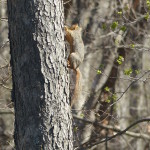
What happens when a squirrel falls?
Squirrels are amazingly agile, but they do slip and fall. It’s not common, but it happens. Rich has seen two squirrels fall from the top of large oak trees.
One squirrel lost its footing on a huge oak tree at the Indian Creek Nature Center when Rich was walking nearby. It spread out its legs and tail and fell horizontally, hitting the ground with a “thump”. Although it fell at least 40 feet the squirrel appeared uninjured, scampered off, and climbed right back up the oak.
Another squirrel fell from an even bigger oak in our home’s backyard. It did the same as the Nature Center Squirrel and spread out its body, hit the ground, and ran right off.
Squirrels rarely fall, but once in a while, they do. Fortunately, as this YouTube video shows, they seem amazingly able to recover from a fall that would instantly kill a human.
What are some of the animals you know as individuals? Let us know!
by Winding Pathways | Jan 26, 2020 | Nature, Reflections/Profiles
News Reports and Remembering
Recent photos of burned and displaced kangaroos and koalas from massive Australian wildfires are heartbreaking and bring back memories of both fighting and setting fires in American woods and prairies.
As a 24-year-old US Forest Service Hot Shot back nearly 50 years ago I had the good fortune to help contain three wildfires in Southern Idaho. One left a memory of towering flames roaring up a steep slope toward my crew as we hurriedly dug a fire line parallel to the ridge. I wielded a chainsaw, dropping pines and firs toward the approaching flames. It was noisy, hot, and scary but our line, with the help of an airplane that dropped a load of “slurry”, stopped the blaze.
Not All Fires Respond the Same
Just a year later I lit a fire in dry prairie grass at the Dillon Nature Center in Hutchinson, Kansas. It roared onward until stopped dead by a mowed path. Green grass doesn’t burn.
We burn our prairie and oak woodland at Winding Pathways every year, usually in the fall because we know that our land, like much of North America, needs fire for good ecological health.
Misleading Reporting
Evening news stories about the terrible destruction of wildfires can be misleading and are never complete because:
* They show the most incinerated place in a vast burned area. Sometimes the land is not nearly so consumed by the fire.
* They never follow up. Months after a burn the same spot is lush with green growth and spangled with wildflowers.
Fire is as much a force of nature as rain and wind. Yes, they destroy houses in their path. Remember, often these were built in the woods without the fire-resistant construction recommended by the US Forest Service. In North America, fires don’t destroy forests or grasslands. They invigorate them.
Every year we look forward to abundant wildflowers and healthy grass in areas we’ve burned. But what about wildlife caught in a rapidly spreading fire? I’ve had the opportunity to watch rabbits, birds, deer, and even elk respond to flames. They don’t panic. Rabbits simply seem to hop to places unlikely to burn. So do deer. Snakes and some insects might enter holes and tunnels in the ground. Some are probably cooked. Baby animals would be unable to flee flames. Fortunately, spring fires, when babies are helpless, are rare.
2019 marked a huge fire event. It was Smokey the Bear’s 75th birthday! I love Smokey. He is one of the most successful marketers ever convincing people to drown campfires and snuff out matches. Smokey was so successful that fires became rare enough for plenty of dead wood to accumulate in Western Forests. That, combined with climate change, helped create the conditions for the catastrophic fires that have burned in recent years. Smokey’s message was a little off, but he’s still a loveable character.
Here is how he came to be. In 1950, after the Smokey Bear character was created, a singed bear cub was found after a fire. He lived for years in the National Zoo in Washington, DC. Known as Smokey, millions of people saw him until his death in 1976. He’s buried near the Smokey Bear Museum in Capitan, New Mexico.
An outstanding website about Smokey and wildfires is sponsored by the US Forest Service. If you are ever in Moscow, Idaho, be sure to stop at the Smokey Bear store on Main Street.




